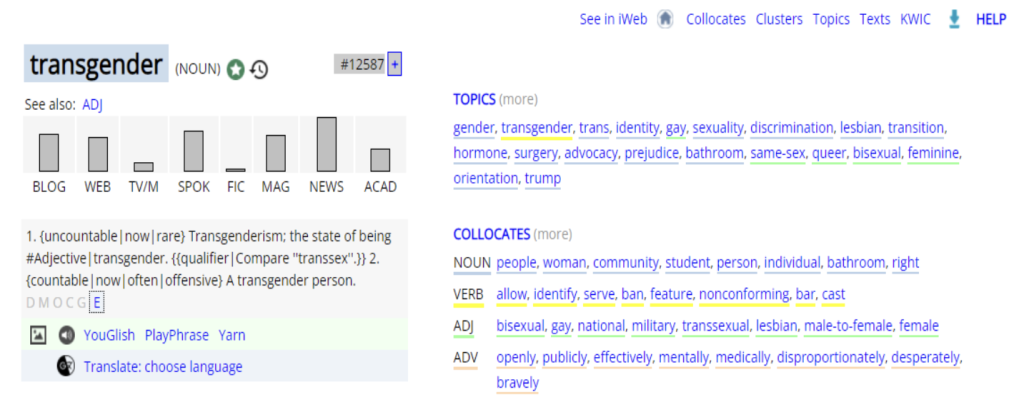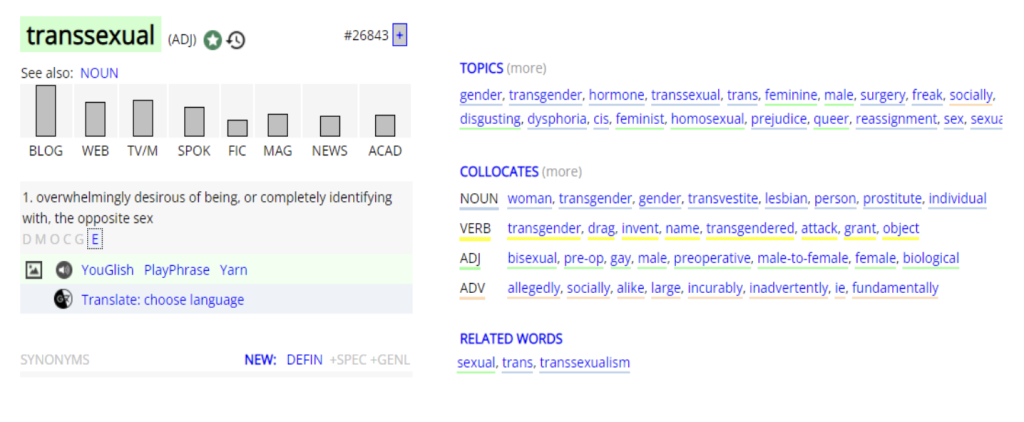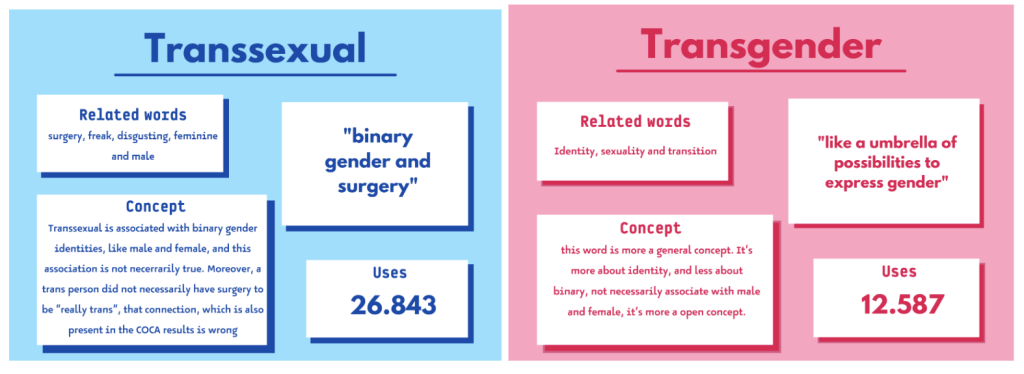3. Using gender-related vocabulary
Lara Batista
By Lara Batista
Undergraduate student at Federal University of Rio Grande do Sul
Goals: To introduce students to terms related to gender identities in English and how to differentiate between the use of transgender and transsexual.
Audience: Intermediate learners of English as a second language (high school and above, or students in an English language course)
Duration: 40-45 minutes.
INTRODUCTION
The term “gender-related vocabulary” refers to words and expressions that are used to describe human gender, sexuality and the letters behind the LGBTQIA+ acronym. In today’s society, it is essential to understand the meaning of the letters behind the LGBTQIA+ acronym, as we can only respect something or someone if we understand the meaning behind the words that we use to refer to them.
There are a lot of LGBTQIA+ people in the world, and they should be respected and be called by their nouns and pronouns of choice. Hence, English learners should take the time to understand these English nouns to properly address LGBTQIA+ people.
In this lesson, corpus tools will be used to illustrate the difference between “transgender” and “transsexual”. At the end of the task, a comparative chart about the use of these terms will be provided as a tool to help students remember these terms and usages for future reference.
STEP 1: CORPUS ANALYSIS
In the first phase of class, the teacher should use the Corpus of Contemporary American (COCA) English to analyze how these two words are different. After registering for COCA (see the Tutorial), the teacher should search for both terms using the “Word” option. This option will present the teacher with a summarized output of the chart, collocate, and concordance tools. The teacher could do this in class with the students or print the results of this search before class.

Figure 1 – COCA results of the search for “transgender”

Figure 2 – COCA results of the search for “transsexual”
In class, the teacher can highlight some of the findings presented in the output: (1) Transgender is less frequent than transsexual in COCA; (2) it collocates with words, such as identity, sexuality and transition. The teacher can also highlight that this word is more of a general concept, like an umbrella term, encompassing many possibilities of gender expression. That is, in COCA, the word transgender relates to identity, and less about a binary division, such as male and female.
The output screen also shows that the word transsexual is more frequent than transgender. It collocates with surgery, freak, disgusting, feminine and male. At this point, the teacher should point out that the differences between these two words are clear; in COCA, transsexual is associated with binary gender identities, like male and female, and this association is not necessarily true. In addition, the association between transsexual and “freak”, shown in the results, is considered disrespectful. The teacher can also clarify that a trans person did not necessarily have surgery to be “really trans,” as trans people don’t have to be validated by a surgery.
The images below can be presented on a slide for students to view in class.

Figure 3 – Summary of findings for “Transsexual” vs “Transgender”
STEP 2: PRACTICE ACTIVITIES
Task #1: Introductory Video and Lecture
Introduction: The teacher should talk a little about the LGBTQIA+ community with their students. They can use this video to start the conversation.
LGBTIQ explained (explainity® explainer video)
After watching the video, the teacher can ask some clarification questions, to make sure students followed the content of the video.
Task #2: Using COCA to Differentiate Transgender and Transsexual
The teacher should open COCA and show students the results of the search for both terms: transgender and transsexual (as demonstrated in the previous section). After that, the teacher can ask students the following discussion questions:
- Do you notice the differences in the use of both words?
- Do you notice any difference in meaning?
- Do you notice any difference between the related words with each of these words (the teacher should highlight the words: freak and disgusting, and explain that they are disrespectful and rude)
- Do you think one term is more respectful than the other to trans people
Task #3: Watch YouTube Video
Living & Dating As A Trans Woman | 4 People Explain
After watching the video above with students, the teacher should ask students to write down their answers to the following questions in their notebook; they should hand in their answers to the teacher upon completion.
- How do trans people refer to themselves?
- Why do you think they prefer to use the term transgender instead of transsexual?
- After this class, do you feel more “prepared” to refer to a trans person using the right words?
- Do you fully understand the difference between the terms?
- Do you want to add something on the board?
Batista, L. (2023). Using gender-related vocabulary. In L. Goulart & I. Veloso (Eds). Corpora in English Language Teaching: Classroom Activities for Teachers New to Corpus Linguistics. Open Educational Resource. Montclair State University.
